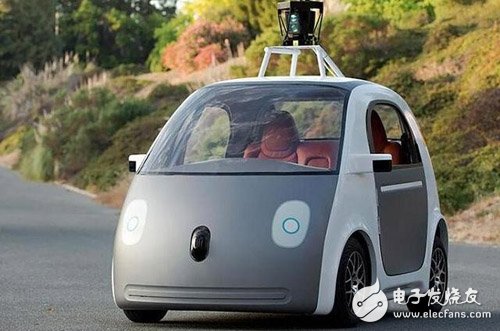In 2016, with the popularization of artificial intelligence technology, unmanned driving climbed the “window†of the industry, and major auto companies and venture capitalists all turned their attention to this field. Perhaps in the near future, unmanned driving will turn from science fiction to reality, and truly achieve universal popularity.
The unmanned market is rushing to compete with traditional car companies to launch a new round of "total attack"In March, GM spent $1 billion to acquire Cruise AutomaTIon, a driverless technology startup. According to people familiar with the matter, the acquisition is estimated to exceed $1 billion. The transaction is expected to end in the second quarter of this year, and Cruise AutomaTIon will remain independent after the acquisition.

In May, Toyota announced a strategic investment in Uber. However, Uber did not disclose the amount of investment in Toyota. According to the investment agreement signed by the two parties, Toyota will join Uber to provide rental solutions to the new Uber driver. Car buyers can rent a car through Toyota Financial Services Group and pay for the car by Uber.
In August, Uber spent $680 million to acquire Otto, an unmanned truck startup that had just been established for eight months. According to industry insiders, this will make the Uber unmanned business more diversified and potentially strengthen the profitability of this business.
In September, Ford Motor Company CEO Fields said that it plans to publicly sell driverless cars in 2025. The goal is to reduce the price of cars, so that driverless cars are no longer luxury, but ordinary consumers have the ability. Purchased products.
With the entry of the giants, the driverless market has become a new battleground for the hegemony. Especially for traditional car companies, driverless seems to be an indispensable "admission ticket". As a result, automakers have increased their investment and exerted unmanned driving technology in an effort to gain a foothold. Recently, BMW and Honda have launched a new round of impact on the unmanned field.
Not long ago, BMW opened a new R&D center in Unterschleissheim, Germany. The center will focus on developing vehicle networking and autonomous driving technologies. At the time of completion, the total number of employees will reach 2,000. In addition, BMW's iNext plan this year also includes innovative technologies such as holographic virtual displays, which are expected to be released at CES in January next year, while its driverless cars will begin in Munich next year. test.
Klaus Fr hlich, a board member of the BMW Group responsible for research and development, pointed out that purely autonomous vehicles are a great opportunity for German car manufacturing bases. When talking about the purpose of setting up a research and development center, BMW said: "Our goal has been very clear: to become the first in the field of autonomous driving." In the future, BMW will focus on the development of autonomous driving, car connectivity, new energy vehicles and sharing. Travel.
Coincidentally, after Fiat Chrysler Motors and Google unmanned driving strategic cooperation, on December 20, Honda Motor announced that it is in formal negotiations with Google's parent company Alphabet's automatic driving department Waymo to discuss the integration of Waymo auto on Honda. driving skills.
Japanese automaker Honda announced negotiations with Waymo, a driverless car company owned by Google's parent company Alphabet, on unmanned technology. If the two sides reach an agreement after negotiations, Honda will become the first Google unmanned technology after FCA. Two car companies customers.
As part of the collaboration, Honda will build Waymo's unmanned technology vehicles with the appropriate software and equipment, while Honda engineers in Silicon Valley and Japan will work closely with Waymo's team to drive unmanned technology. enter the market. Some analysts believe that the potential agreement between Honda and Waymo indicates that automakers are splitting in the face of high new technology development costs, some of which are self-developed technologies such as Ford and GM, while others are turning to suppliers to share costs.
At present, Waymo has not commented on the cooperation between the two parties, but in the industry view, Honda teamed up with Waymo, although it is “unexpectedâ€, it is also “reasonableâ€.
It is understood that Waymo's automatic driving system uses radar, camera and lidar sensor technology, and currently focuses on Level 4 and Level 5 of fully automatic driving. According to John Krafcik, Waymo is not interested in producing autonomous vehicles, but is developing autopilot technology, which is likely to be used in car sharing, transportation, trucking, logistics and private cars. This concept is almost in line with Honda, who is eager to find a breakthrough in the field of autonomous driving. It is foreseeable that Honda's cooperation with Google will bring new breakthroughs in driverless technology innovation.
The 58MM mini embedded thermal receipt printer has a small appearance and is generally installed in self-service terminal equipment to support the secondary development of major systems. There are two types of manual tearing and automatic cutting. It is also suitable for various terminal equipment, such as medical testing equipment, intelligent classification equipment, industrial testing equipment, intelligent vehicle-mounted printing list equipment, etc. At the same time, it also supports the secondary development of MCU, Android, Raspberry Pi, windows and other systems.
58Mm Embedded Bill Printer,58Mm With Automatic Paper Cutting Printer,58Mm Receipt Printer,58Mm Embedded Label Printer
Shenzhen Geyi Technology Co., Ltd. , https://www.gy-printer.cn